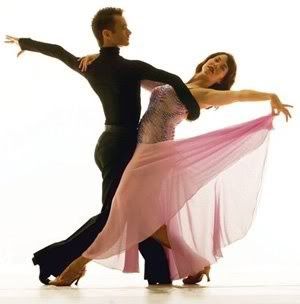 I’ve been thinking about how despite our better intentions, changing organizations is never predictable, and doesn’t perfectly fit into a nice theoretical model the way we wish it would.
I’ve been thinking about how despite our better intentions, changing organizations is never predictable, and doesn’t perfectly fit into a nice theoretical model the way we wish it would.
As change agents, we frequently Dance in the Moment (a term I learned a few years ago in the CTI coaching program). While we work toward an envisioned future, we can only handle what is right in front of us, which is constantly shifting based on the reactions to the strategies we’re using to try to influence change.
If you think of the process of change as a dance, you realize it’s a partnership between two entities. Even if you haven’t taken ballroom dancing classes (or watched Dancing With the Stars), you probably know that each person in the duo has a specific role: leader and follower.
A few of the moves that the leader does to show the follower where to go are overt gestures that can be observed from the audience. However, most of the time the follower just seems like she knows what to do next, even if the dance is not choreographed. For the most part, the dance is a series of subtle nudges by the leader: a tug of the hand, a slight pressure at the waist that indicate the steps and the direction to go next.
The follower, for her part, responds to the nudges with what she interprets as appropriate movements, and adds her own flair to the dance. Sometimes the corresponding movements are what the leader intended, and sometimes they aren’t. Depending on the leader’s ability to react quickly, the result can be a seamless transition, or it could be a disastrous fall. Either way, it is the role of the leader to make the follower look good.
It’s important to note that the dance doesn’t work at all without a third element: the music. The nudges by the leader mean nothing to the follower if there is no context, no framework that they share. The music tells the dancers if they are doing the Waltz or the Mambo. They won’t get very far without stepping on toes if they are performing one of each. The music also keeps them in step, moving together at the same time.
The analogies of the dance’s leader and follower to the subject of organizational change are obvious. But the music might be a lot of things. What do you think?
What role does music play in the dance of change?
If you enjoyed this post, you may also like:
